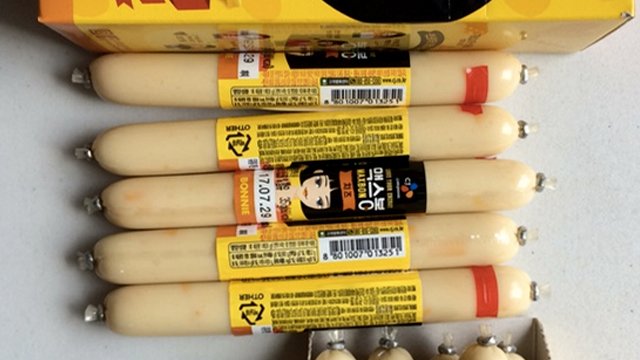Cold + Texting = A Run on Meat Sticks?

It’s early April here in the United States and winter, hopefully, is finally releasing us from its grip. Officially, it’s spring — the spring equinox was a few weeks ago — but in the New York City area, temperatures are still hovering in the low 50 degrees Fahrenheit during the day, and approaching freezing overnight. Many people are still donning hoodies, jackets, and even hats. But it’s the year 2023, so we’re resisting the need to wear gloves. Why?
Because of our phones, of course!
Touchscreen phones — the iPhone, the Samsung Galaxy, etc. — have become our portals to the rest of the world. We use them to text our friends, take selfies for social media, check the news, and occasionally, even place phone calls. But unfortunately, they don’t work all that great when we’re wearing gloves. That’s because our phones use something called “capacitive touchscreens” — behind the glass, there’s a grid of conductive sensing lines, with each intersection acting as a capacitor. When we touch our screens with our naked fingers, the phone sends a weak electrical charge into our bodies which, in turn, gets returned through our fingers. That charge registers with a point on the grid of capacitors, allowing the phone’s software to detect where we’re touching. When we’re wearing gloves, though, the gloves shield our bodies from that weak electrical charge coming off the phone, and as a result, the phone can’t “see” where we’re touching the screen.
There are a few solutions to this, but the two biggest ones each have a major downside. There are gloves with touchscreen-sensitive pads on the fingers, but you need to position your fingers in a specific way to make sure the pads come in contact with the screen, and that’s often not the natural way we use our phones. And there are also touchscreen styluses that can take this charge and send it back into your phone without the electricity ever entering your body — but those can be expensive and are easy to misplace.
So if you’re in an area that doesn’t get cold enough to warrant gloves, your best bet is to simply go gloveless. Even when temperatures hover around freezing, it’s often worth going gloveless. For example, in South Korea, the coldest month is typically January, and even then, temperatures typically hover around -1.9℃ (28.5F). But the winter of 2009-2010 wasn’t typical. Temperatures were below freezing for a week straight in December and in early January, plummeted to a low of -21℃. Out came the gloves — and not the fancy ones with the touch-sensitive finger pads. Most people didn’t have styluses, either, so texting while commuting became a hassle.
Until someone out there became a hero — and discovered that snack sausages also conduct electricity.
Snack sausages, if you’re not familiar with them, are exactly what the name sounds like: tubular meat (typically pork, beef, or chicken, but sometimes fish) encased in a plasticky wrapper, as seen above. When you’re hungry, you buy one, peel back the wrapper, and start munching. They’re pretty cheap — Amazon, in the U.S., sells them for about $1.50 each if you buy in bulk, and that price probably includes a significant import premium. And they’re not hard to find, either; many convenience stores carry them. They’re basically Korea’s version of the Slim Jim, but hot dog-shaped. And because they’re conductive, they could also be used as styluses, allowing you to text your friends while still wearing your gloves.
But no one would use a meat snack as a stylus, right? That’s embarrassing and kind of gross, right?
Apparently not — because the snack sausages became very popular in the winter of 2009-2010. According to ITNews in Korea (via Jason Kottke, whose blog post on the subject has a picture of a couple of people using the meat sticks as styluses), people started buying snack sausages like crazy: “[the company that makes the meat snacks] analyzed the sales of convenience stores [ . . . ] and found that sales for the two months from December to January of last year [increased by] 39% increase compared to the same period last year, even though there were no special events.” Any embarrassment from using a piece of processed meat as a pseudo-finger was mitigated by the utility of the endeavor.
Bonus fact: If you go to the bank and use the ATM, it also probably has a touchscreen — but it will work even if you have gloves on. The reason why is that, unlike your phones, these are not typically capacitive touch screens, but rather a “resistive touchscreen.” Those screens typically have two layers — a flexible one that you touch that hovers just slightly over a more rigid one. When you push the flexible one onto the rigid one, you’re creating a circuit, and the ATM software can detect where the connection is being made. Resistive touchscreens often require the user to push down somewhat hard to trigger the signal (capacitive ones do not require any pressure at all), but they’re typically cheaper and, importantly for ATMs, are less prone to registering an accidental touch. (If you want more, here’s a good breakdown of the technology behind the two types of screens and their pros/cons.)
From the Archives: The ATM at the Bottom of the Earth: How to get cash in Antarctica.
